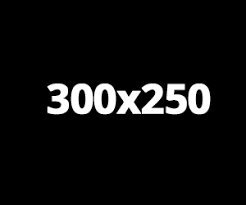A Significant Decline in UK Visa Applications: Understanding the Shift
Recent data released by the Home Office paints a concerning picture of the UK’s immigration landscape, revealing that applications for key visa routes have dropped by more than a third over the past year. This decline, amounting to a staggering 37%, has sparked discussions among policymakers, immigration experts, and prospective migrants. Let’s delve into the numbers, the reasons behind this trend, and its potential implications for the UK.
Overview of Visa Application Statistics
In the year leading up to March 2025, the Home Office recorded around 772,200 visa applications, a sharp decrease from nearly 1.24 million the previous year. This significant drop spans several categories, including work, study, and family visas. Such a decline is not merely a statistical anomaly; it reflects the shifting dynamics of the UK’s immigration system post-Brexit and amid changing government policies.
Decline in Health and Care Worker Visa Applications
The most pronounced decrease has been observed in the applications submitted by foreign health and care workers. These applications plummeted by an astonishing 78%, from 359,300 in 2023/24 to just 80,700 in 2024/25. The crux of this decline can be attributed to a recent ban imposed by the previous government on overseas care workers—a move aimed at managing domestic job opportunities but which has evidently backfired, straining critical sectors of the economy.
Impact on Student Visas and Dependents
The visa application landscape for students has also experienced radical changes. Applications from family members of sponsored study visa holders have fallen by an eyebrow-raising 83%. Main student applications have also witnessed a modest decline of 11%. The tightening of regulations prohibiting students from bringing family dependents, except in specific circumstances, appears to be a significant factor in these figures.
Stricter Immigration Rules and Their Consequences
The introduction of stricter immigration rules, including a substantial increase in the salary threshold for skilled workers to £38,700, has had a ripple effect on the overall application processes for various visa types. The tightening of regulations signifies a governmental shift towards a more selective immigration policy, aimed at attracting only those with high-level skills or qualifications.
Dr. Ben Brindle, a researcher at the Migration Observatory at the University of Oxford, pointed to the restrictive policies as a primary driver behind the notable decline in applications. According to him, the fall in health and care worker applications, along with the inability for most student dependents to join them in the UK, has shaped this landscape.
The Economics of Immigration
Interestingly, while the application numbers paint a bleak picture, Dr. Brindle highlighted a curious trend: applications from migrants seeking roles outside of health and care have not dipped as significantly as expected. This may imply that employers are adapting to the increased salary thresholds by raising wages to attract quality talent. This economic adjustment underlines how businesses are evolving in response to the changing immigration landscape.
However, it also raises questions about how these increased costs will impact businesses and the availability of services, particularly in sectors already experiencing workforce shortages.
Migration Trends Post-Brexit
Despite the declining application rates, it is important to place this in the context of migration trends following Brexit. The number of individuals entering the UK remains higher than pre-Brexit levels, largely fueled by non-EU citizens. This ongoing flow suggests that while certain visa categories are experiencing significant drops, the overall immigration framework may still sustain a high level of net migration.
The Future of UK’s Immigration Policy
As discussions continue regarding immigration reform, including potential shifts in visa policies and requirements, stakeholders are keenly observing how these trends will influence the UK’s economy, labor market, and broader societal fabric. The complexities surrounding immigration highlight the balancing act between attracting global talent, meeting domestic employment needs, and addressing public sentiment on immigration.
The dramatic shifts in UK visa applications reflect the country’s ongoing struggle to navigate the delicate waters of immigration policy reform, where the repercussions of these policies could resonate for years to come.




